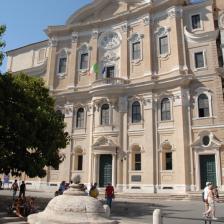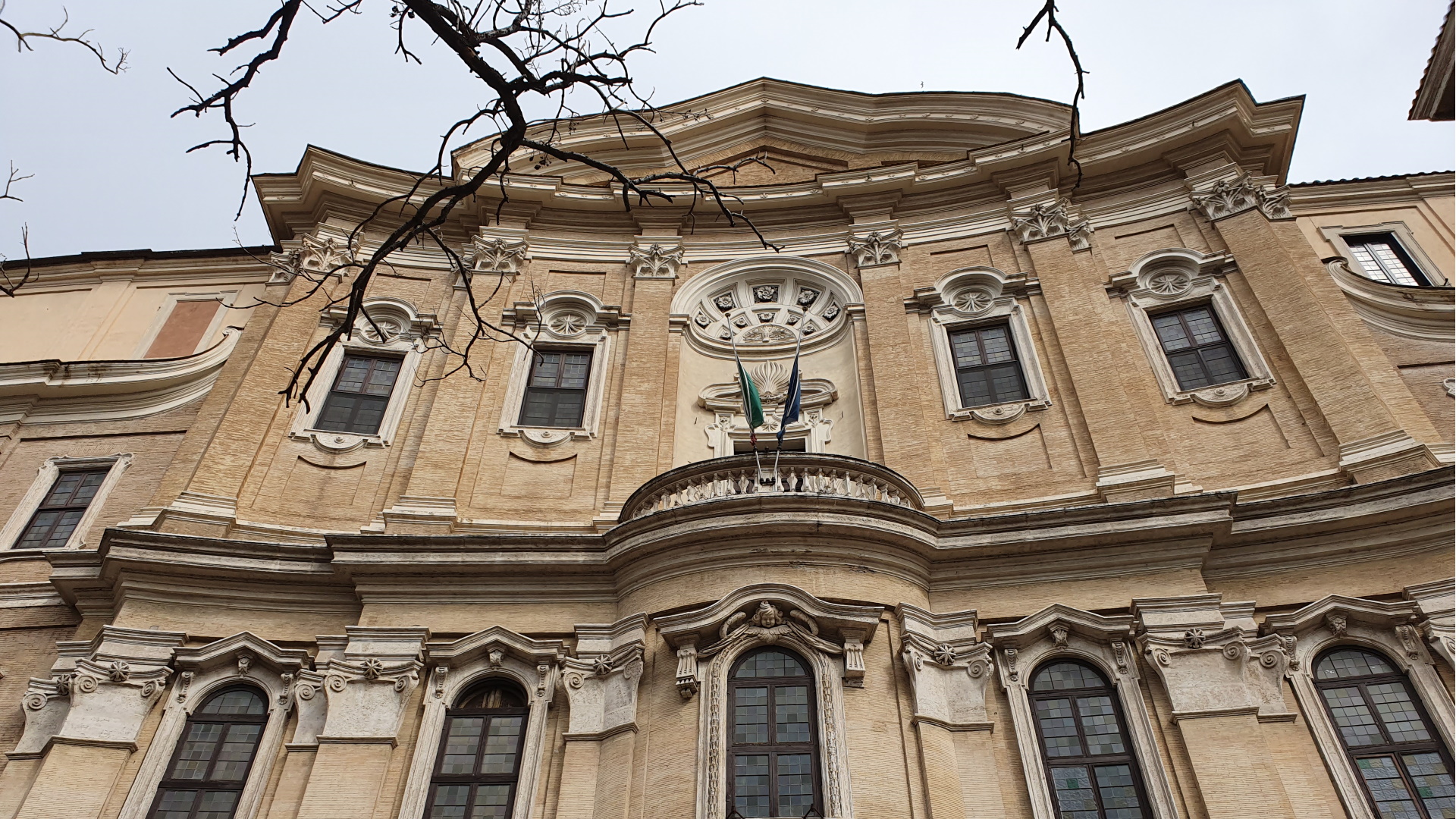
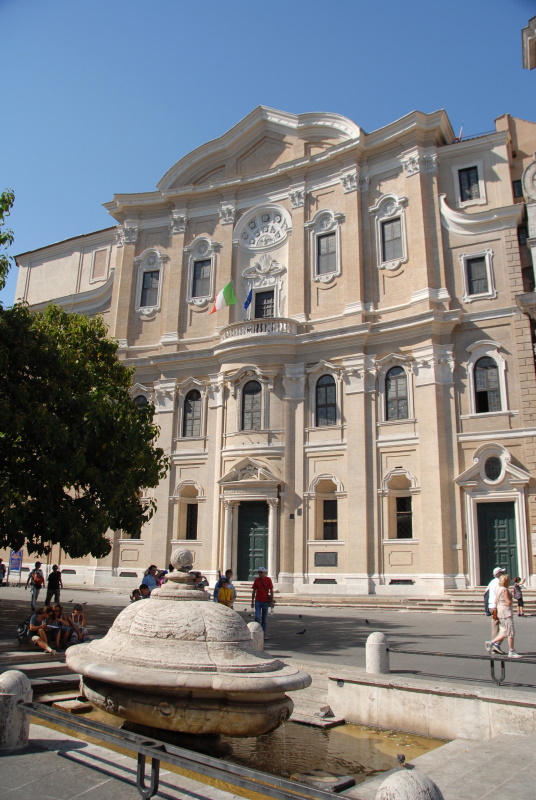
The Palazzo dei Filippini complex consists of the Convent and Oratory, and occupies a large block between Piazza della Chiesa Nuova, Via dei Filippini, Piazza dell'Orologio, Via del Governo Vecchio and Via della Chiesa Nuova. It was designed by Borromini, who won in 1637 the competition announced by the Filippini Fathers for the construction of the new buildings.
The Convent has three four-storey brick façades, with rectangular windows with simple panes; the simplicity and austerity of the building is interrupted only by the Clock Tower, topped by an elegant iron crowning. The original clock mechanism, from 1649, is now in the Museo di Roma in Palazzo Braschi.
The Oratory differs significantly from the simple lines of the Convent, and is one of the masterpieces of Baroque art. The façade, made entirely of brick, is inspired by a human body with open arms, as if to embrace the faithful. The curved surface is divided into two orders, partitioned by pilasters with Corinthian capitals divided by a wide cornice; in the first, the central part is convex; the door is surmounted by a tympanum, while on the sides are niche windows. The second order has a concave central part where there is a window with a balcony, surmounted by a coffered arch, in the center of which is the dove of the Holy Spirit. Crowning the façades is a mixtilinear pediment.
The interior of the Oratory. Which is also knows as Sala Borromini and is used for conferences and various cultural activities, is marked by pillars with Ionic capitals and a second order with pilasters; on the short sides are two loggias.
The upper floor of the complex houses the Vallicelliana Library.
Piazza dell' Orologio
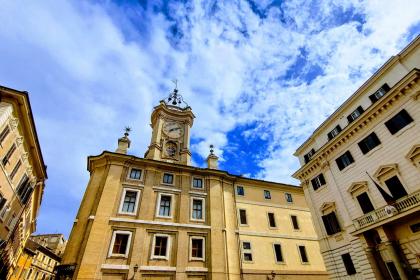
 Condividi
Condividi
Seven different point of views to read Rome: the historical libraries
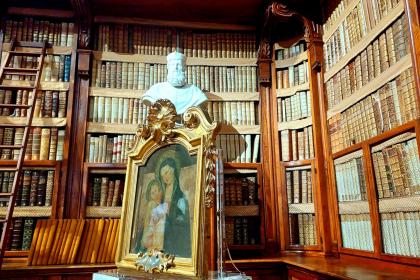
The history of Rome seen through its libraries
The Church of Santa Maria in Vallicella (Chiesa Nuova) and the rooms of San Filippo Neri
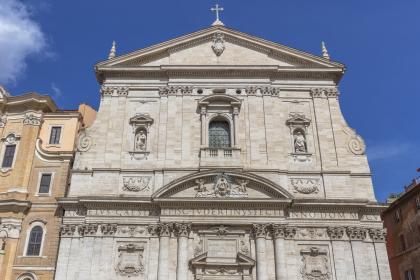
 Condividi
Condividi
Museo di Roma – Palazzo Braschi
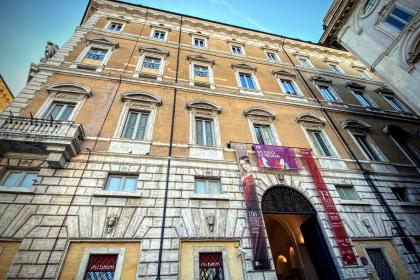
 Condividi
Condividi
Information
Visit to the Borromini Hall:
Visits can be made with staff from the Vallicelliana library or with your own guide
by sending email to b-vall.didattica@beniculturali.it (indicating the preferred days of the visit, generally in the morning)
 Condividi
Condividi
Location
To find out about all accessibility services, visit the Rome accessible section.












































